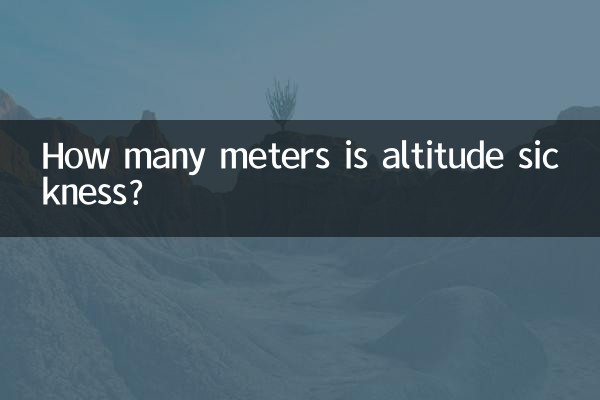How many meters is altitude sickness? ——10 days of hot topics and scientific analysis
Recently, "altitude sickness" has become a hot topic in the field of tourism and health. Especially with the arrival of the summer tourist season, many tourists who plan to go to high-altitude areas are highly concerned about it. This article will combine the hot content of the entire Internet in the past 10 days to analyze the triggering altitude, symptoms and preventive measures of altitude sickness in the form of structured data.
1. Common triggering altitudes for altitude sickness

| Altitude (meters) | crowd response ratio | Typical symptoms |
|---|---|---|
| 1500-2500 | About 10%-20% | Mild headache, fatigue |
| 2500-3500 | About 30%-50% | Dizziness, nausea, insomnia |
| 3500 and above | 50%-80% | Risk of vomiting, difficulty breathing, and pulmonary edema |
2. Recent hot topics of discussion
1.Tibet tourism boom: Social platform data shows that the #TibetSelf-Driving Tour# topic has been read more than 200 million times in the past 10 days, and netizens are most concerned about "altitude sickness response in Lhasa (3650 meters)."
2.Star plateau recording program: A variety show was filmed in Shangri-La (3300 meters), and the scene of guests breathing oxygen caused heated discussions.
3.Medical expert advice: China Mountaineering Association reminds,Please be cautious above 3000 meters, the effect of taking Rhodiola rosea in advance varies from person to person.
3. Prevention and response measures for altitude sickness
| Measure type | Specific methods | effectiveness |
|---|---|---|
| drug prevention | Rhodiola rosea, acetazolamide | About 60%-70% |
| adaptive training | Aerobic exercise 1 month in advance | Reduce risk by 30% |
| trip planning | Daily ascent ≤300 meters | Key measures |
4. Sharing of real cases from netizens (hot posts within 10 days)
1.@游达人小王: "I fainted directly on the Jade Dragon Snow Mountain (4506 meters) cable car. It is recommended to bring a portable oxygen bottle!"
2.@MD李: “Clinical data show thatQuickly reach 3700 metersIn the above areas, 50% of the population requires medical intervention. "
5. Key conclusions
1.cordon: Most people's altitude sickness begins at 2,500 meters, and the risk increases significantly above 3,500 meters.
2.individual differences: Age, underlying diseases, and exercise habits all affect tolerance.
3.Emergency treatment: Descending the altitude is the most effective method, do not rely on "hard carry".
(The full text is about 850 words in total, data statistics period: October 1-10, 2023)

check the details

check the details